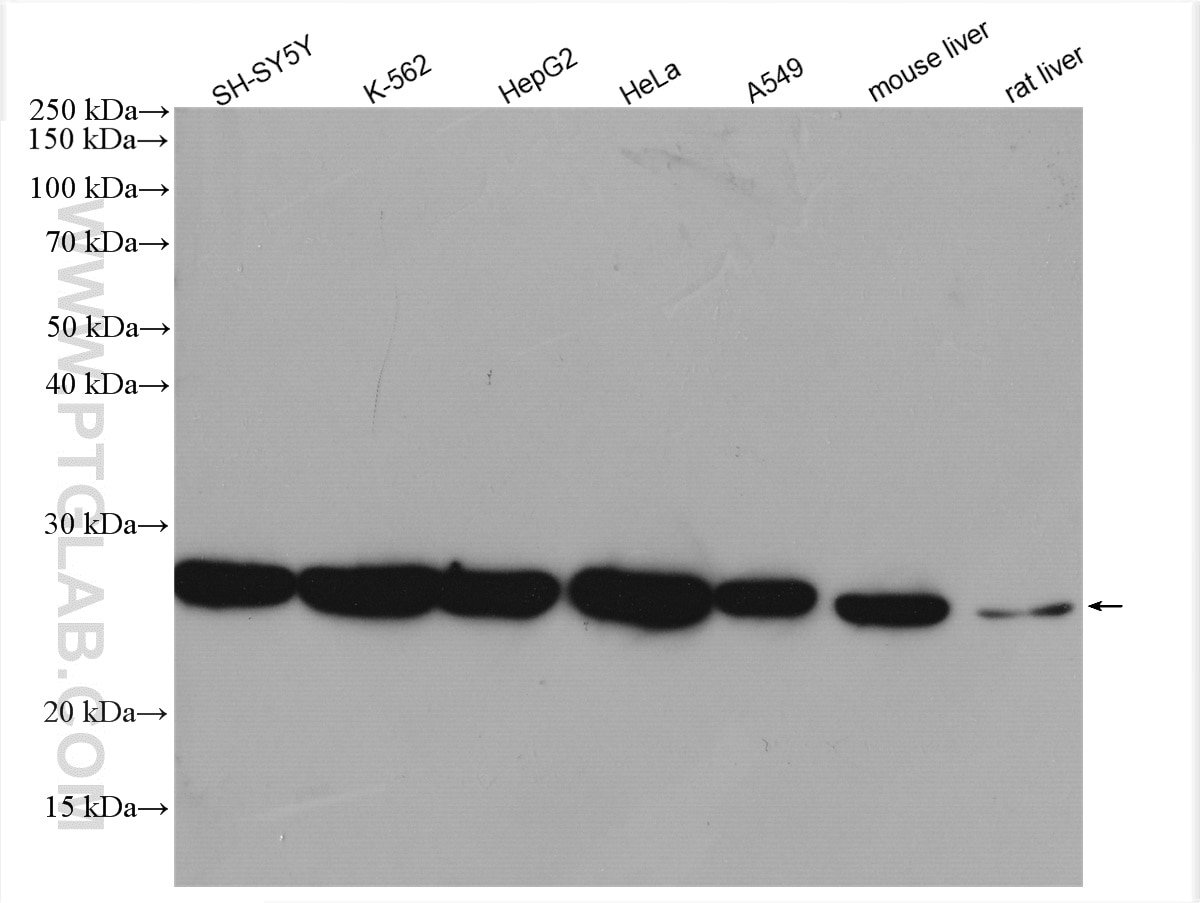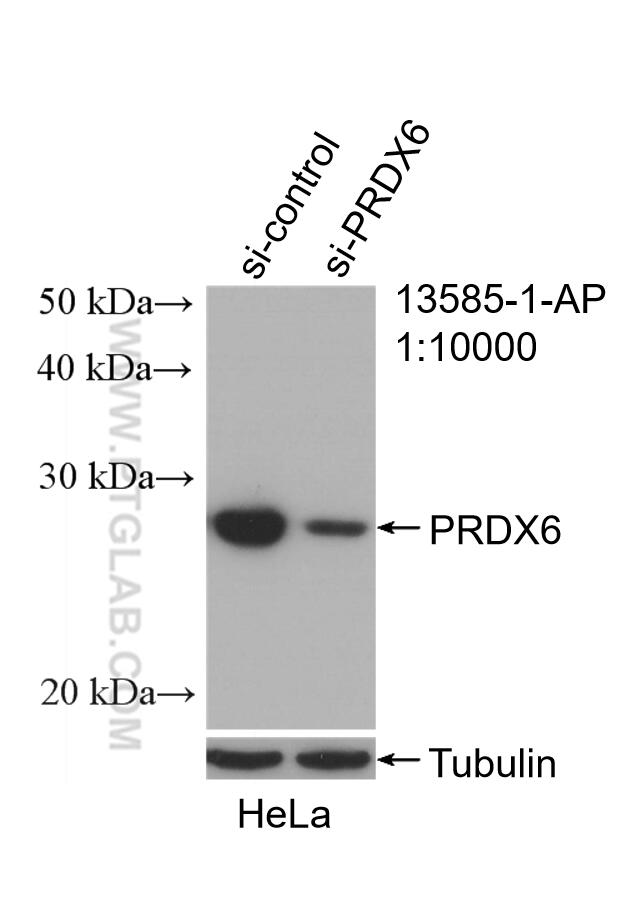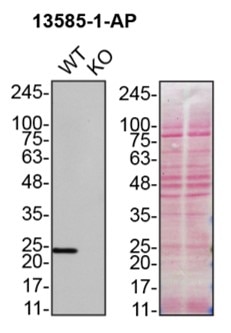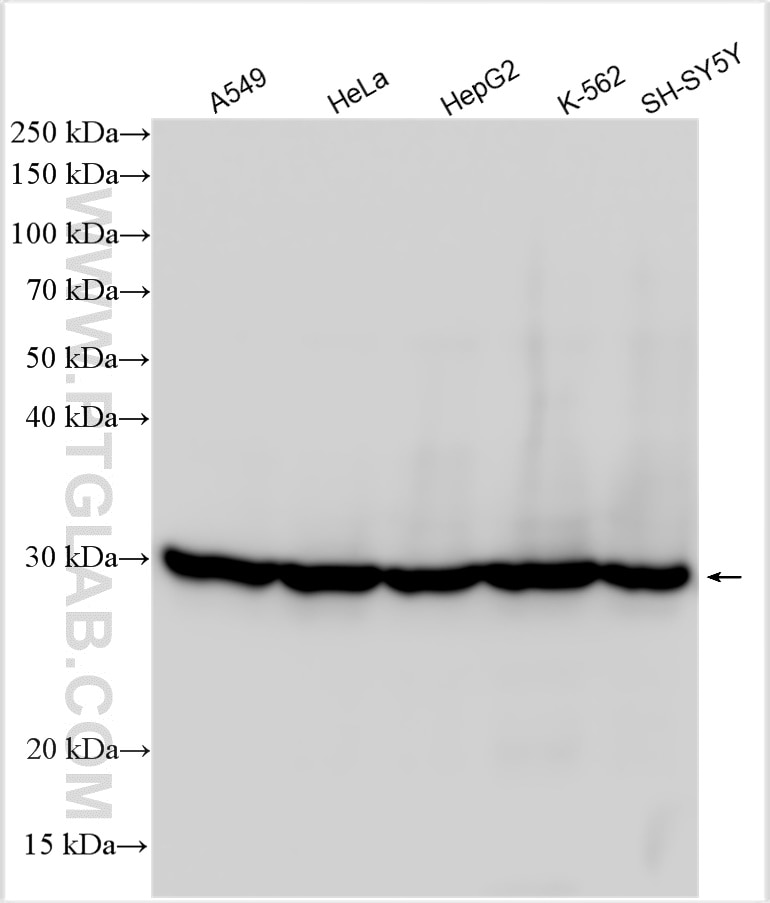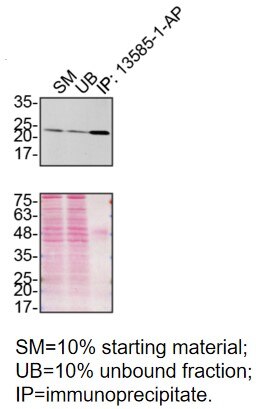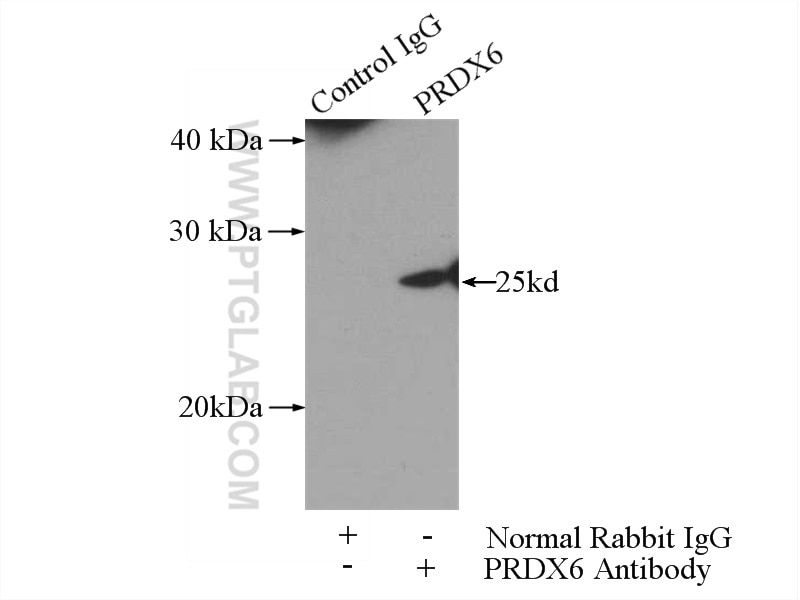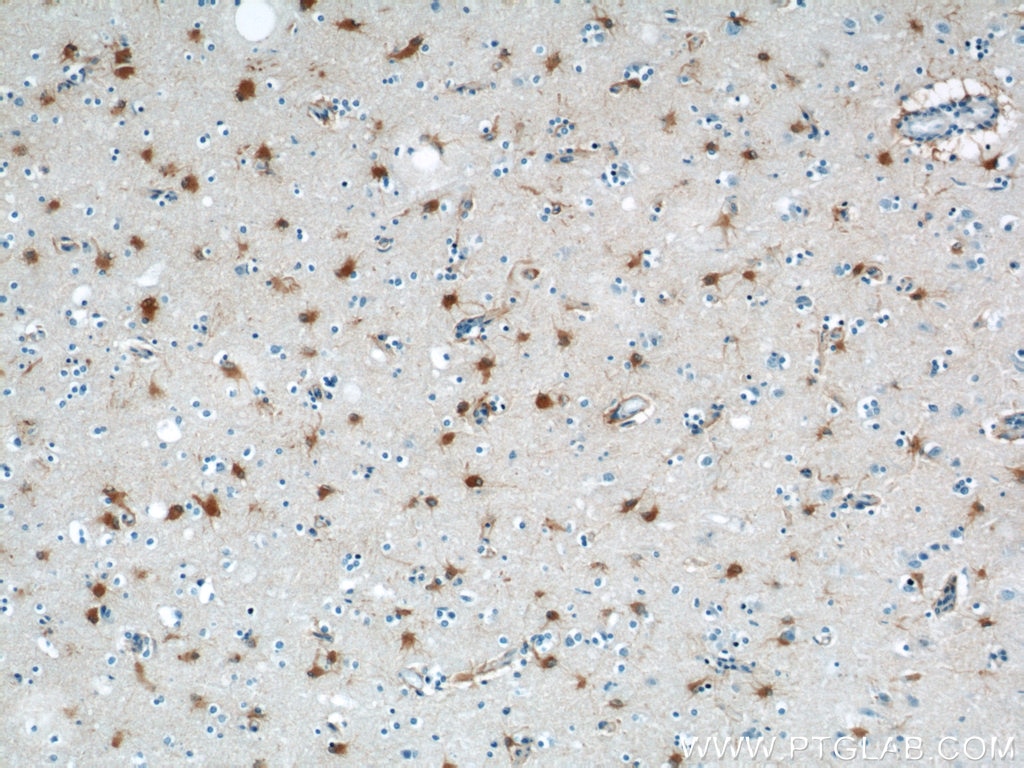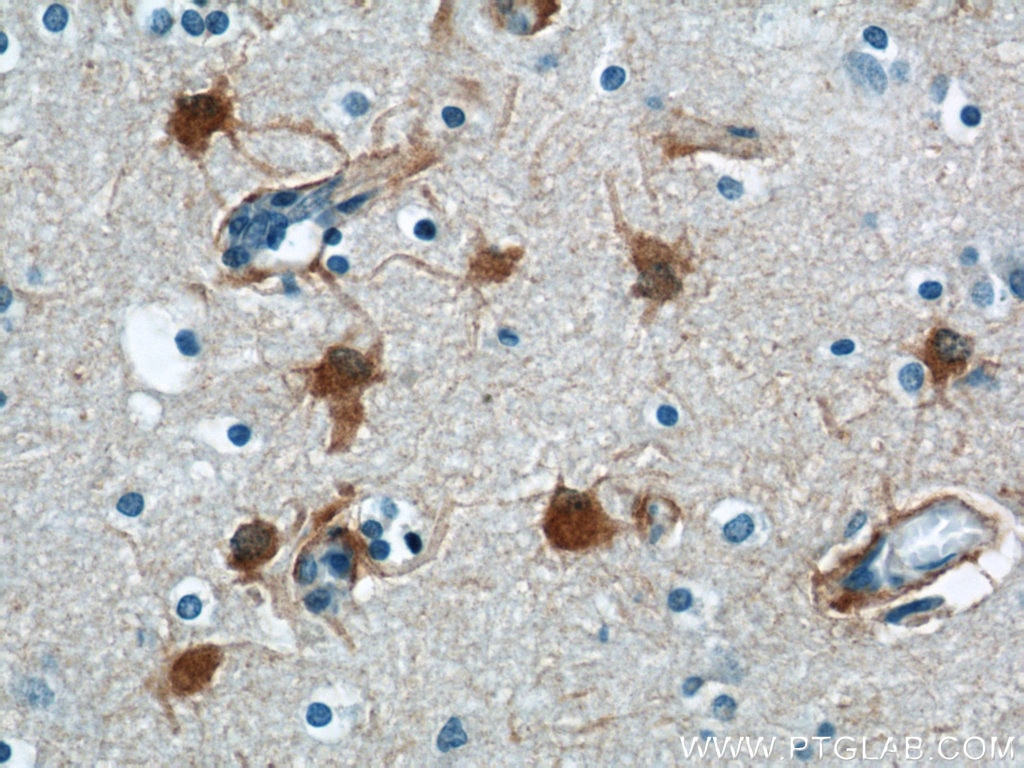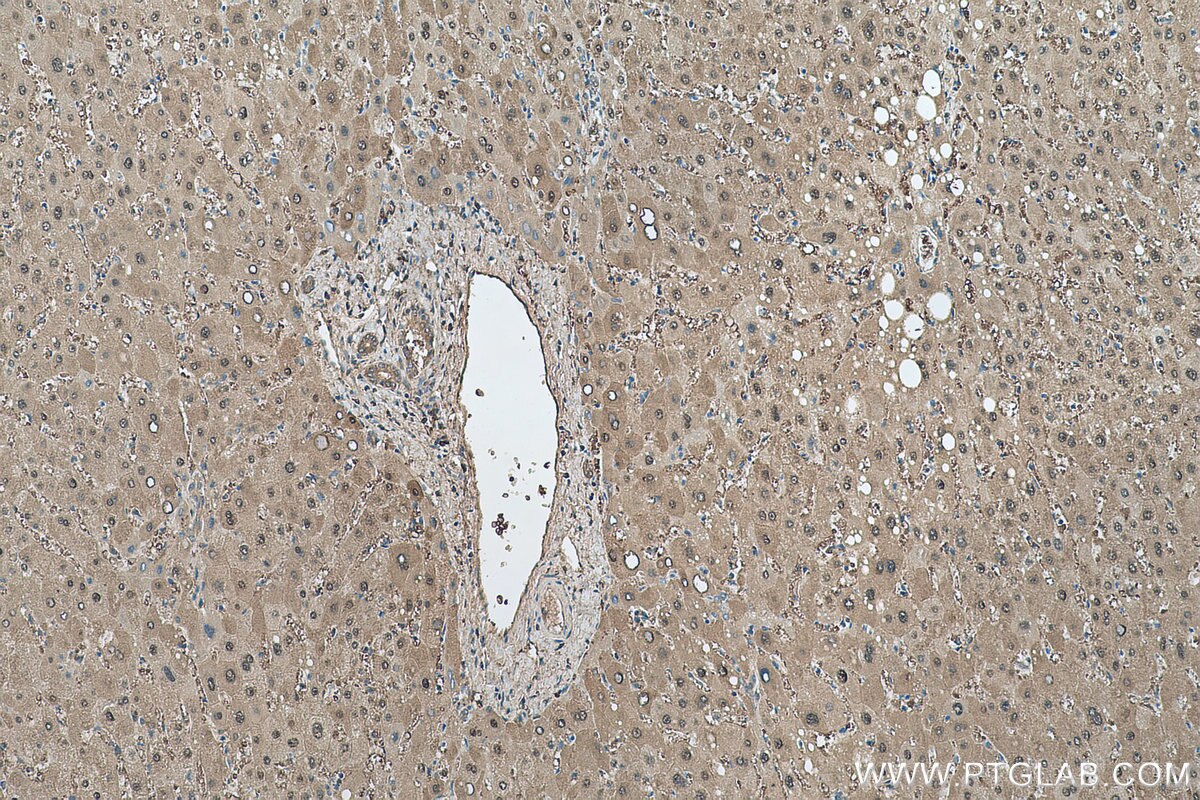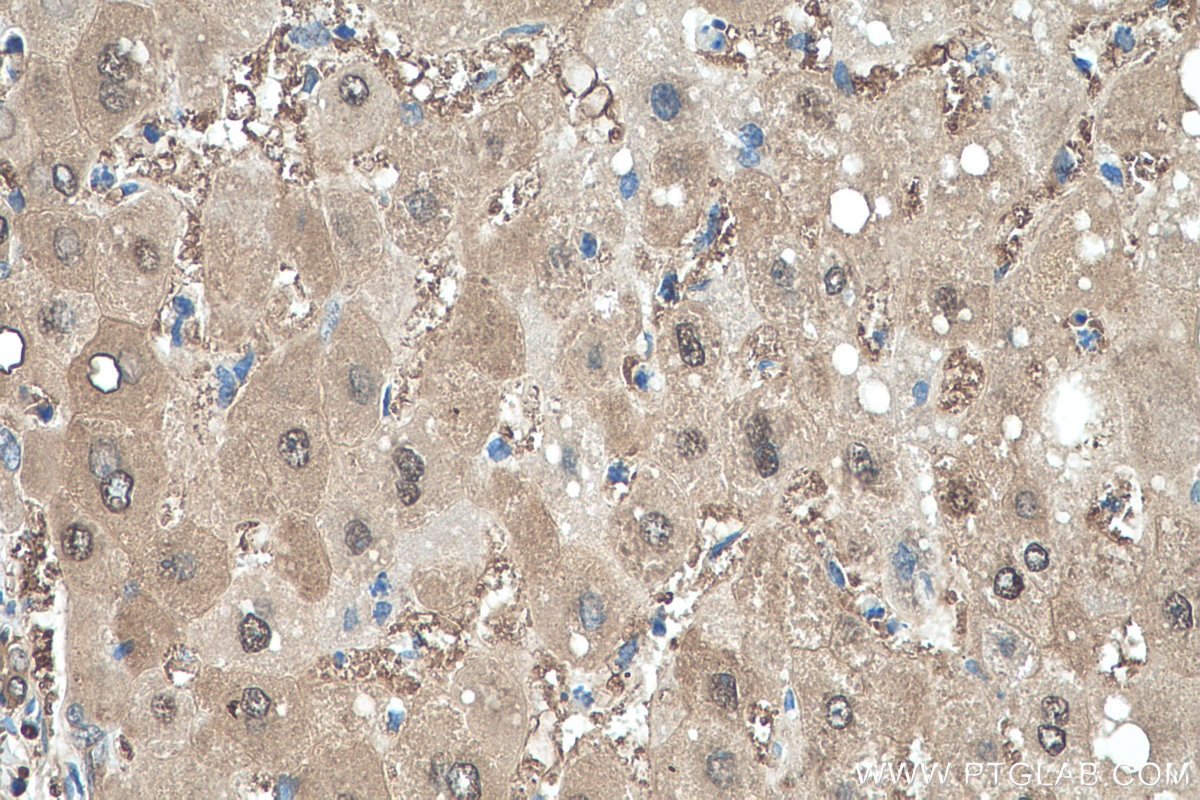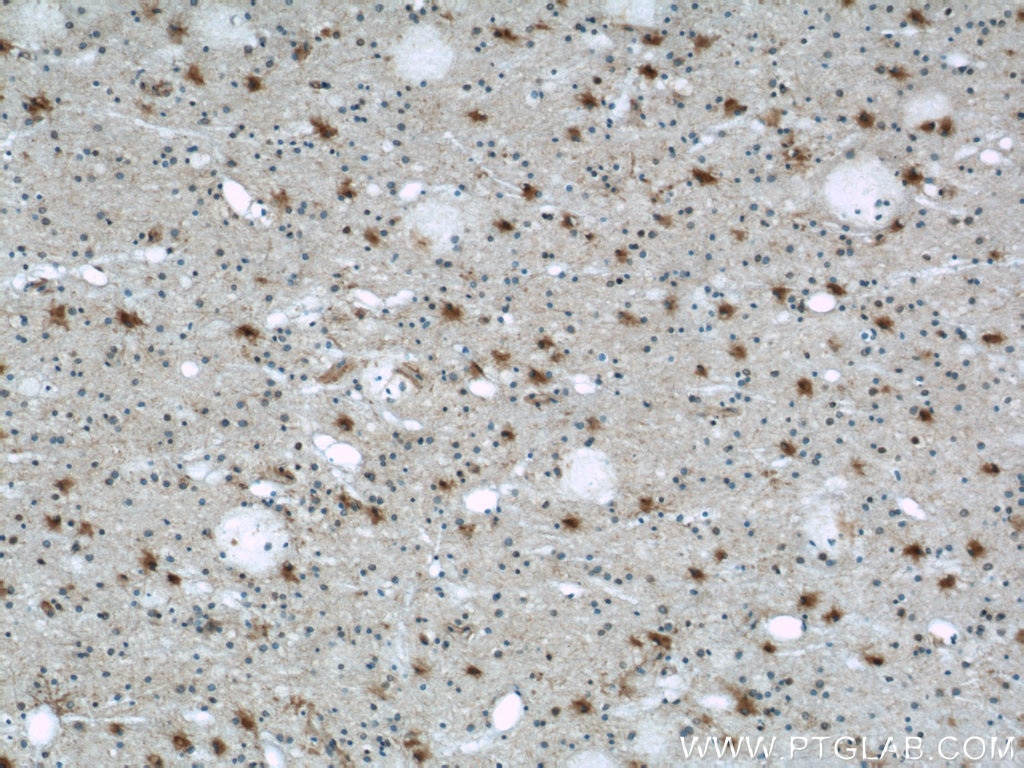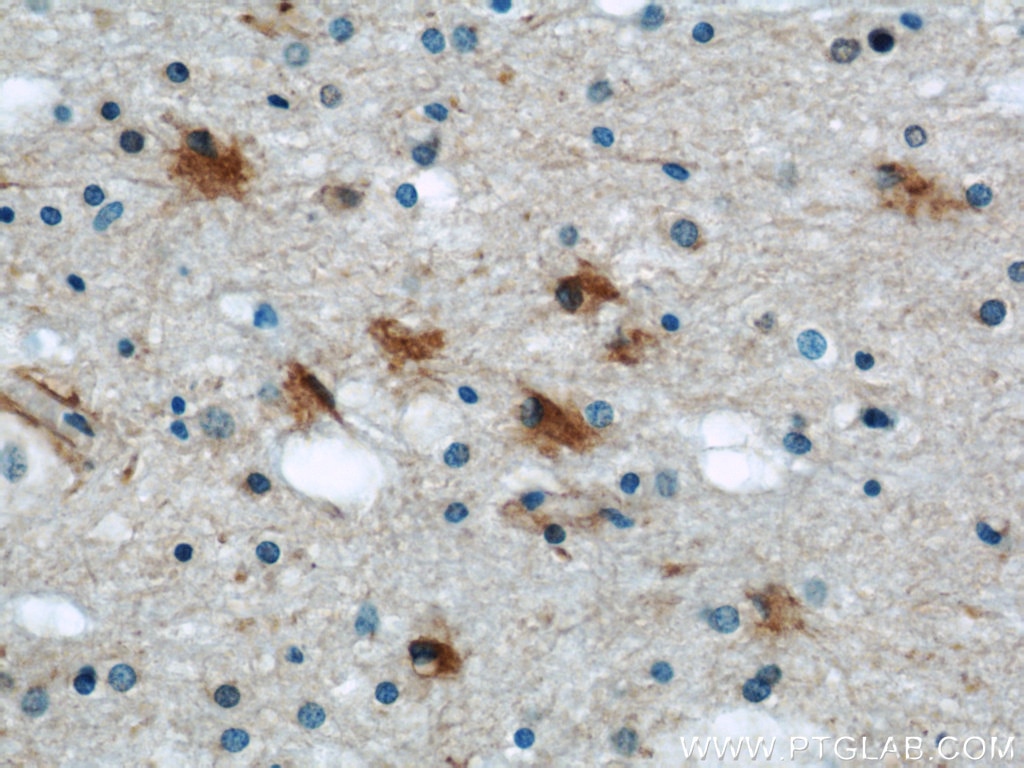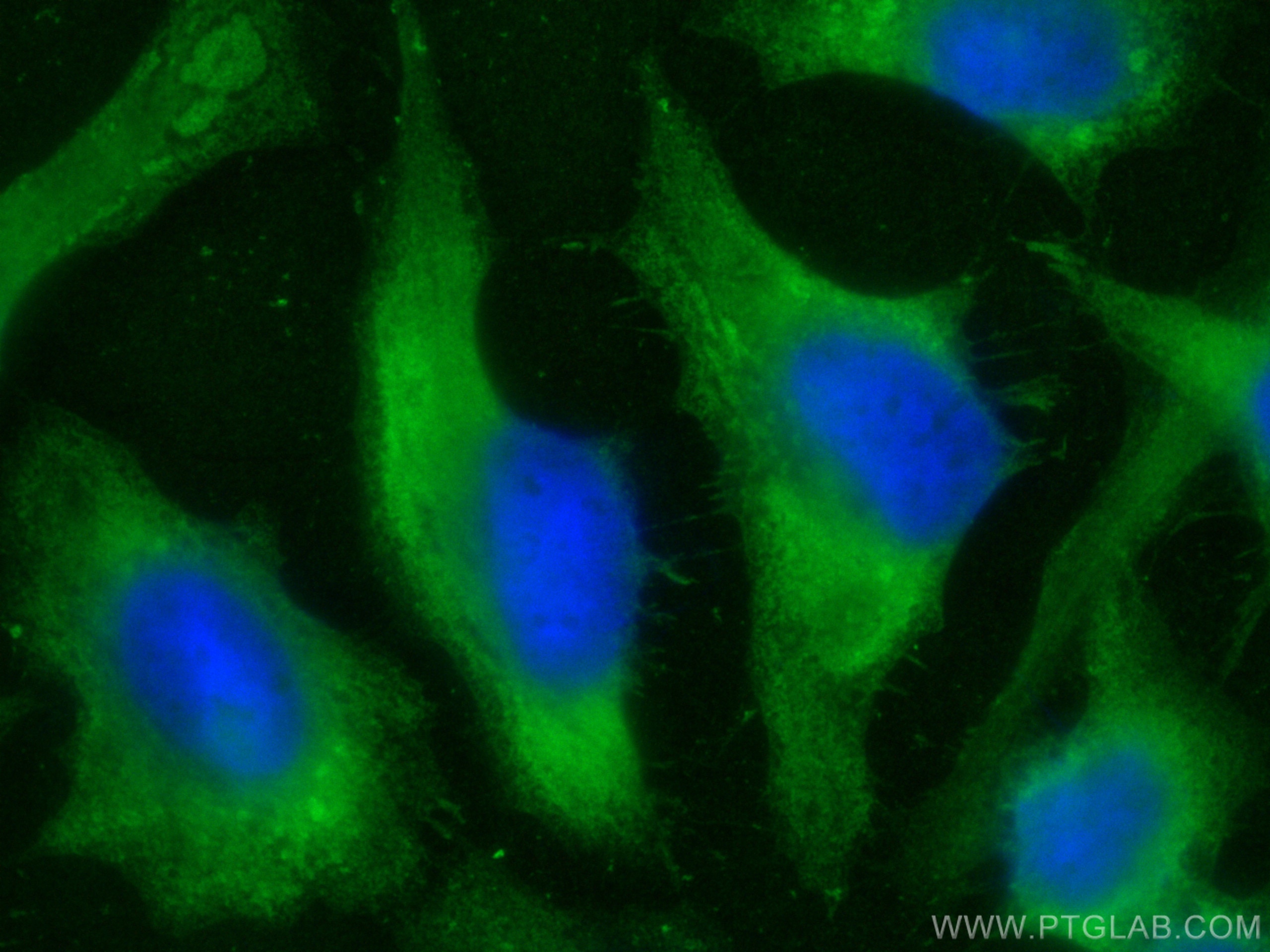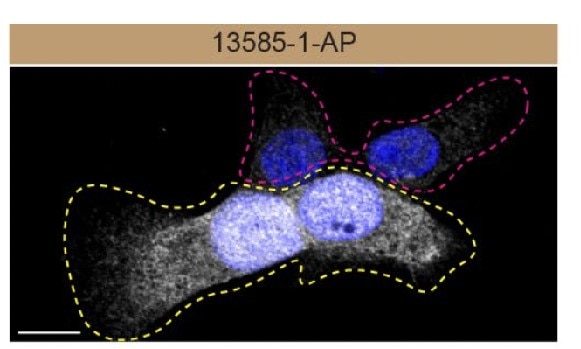- Phare
- Validé par KD/KO
Anticorps Polyclonal de lapin anti-PRDX6
PRDX6 Polyclonal Antibody for WB, IHC, IF/ICC, IP, ELISA
Hôte / Isotype
Lapin / IgG
Réactivité testée
Humain, rat, souris
Applications
WB, IHC, IF/ICC, IP, ELISA
Conjugaison
Non conjugué
N° de cat : 13585-1-AP
Synonymes
Galerie de données de validation
Applications testées
| Résultats positifs en WB | cellules SH-SY5Y, cellules A549, cellules HeLa, cellules HepG2, cellules K-562, tissu hépatique de rat, tissu hépatique de souris |
| Résultats positifs en IP | cellules HeLa, HAP1 cells |
| Résultats positifs en IHC | tissu hépatique humain, tissu cérébral humain il est suggéré de démasquer l'antigène avec un tampon de TE buffer pH 9.0; (*) À défaut, 'le démasquage de l'antigène peut être 'effectué avec un tampon citrate pH 6,0. |
| Résultats positifs en IF/ICC | cellules HeLa, |
Dilution recommandée
| Application | Dilution |
|---|---|
| Western Blot (WB) | WB : 1:2000-1:12000 |
| Immunoprécipitation (IP) | IP : 0.5-4.0 ug for 1.0-3.0 mg of total protein lysate |
| Immunohistochimie (IHC) | IHC : 1:100-1:1000 |
| Immunofluorescence (IF)/ICC | IF/ICC : 1:200-1:800 |
| It is recommended that this reagent should be titrated in each testing system to obtain optimal results. | |
| Sample-dependent, check data in validation data gallery | |
Applications publiées
| KD/KO | See 6 publications below |
| WB | See 34 publications below |
| IHC | See 8 publications below |
| IF | See 5 publications below |
Informations sur le produit
13585-1-AP cible PRDX6 dans les applications de WB, IHC, IF/ICC, IP, ELISA et montre une réactivité avec des échantillons Humain, rat, souris
| Réactivité | Humain, rat, souris |
| Réactivité citée | rat, Humain, souris |
| Hôte / Isotype | Lapin / IgG |
| Clonalité | Polyclonal |
| Type | Anticorps |
| Immunogène | PRDX6 Protéine recombinante Ag4512 |
| Nom complet | peroxiredoxin 6 |
| Masse moléculaire calculée | 224 aa, 25 kDa |
| Poids moléculaire observé | 25-30 kDa |
| Numéro d’acquisition GenBank | BC035857 |
| Symbole du gène | PRDX6 |
| Identification du gène (NCBI) | 9588 |
| Conjugaison | Non conjugué |
| Forme | Liquide |
| Méthode de purification | Purification par affinité contre l'antigène |
| Tampon de stockage | PBS with 0.02% sodium azide and 50% glycerol |
| Conditions de stockage | Stocker à -20°C. Stable pendant un an après l'expédition. L'aliquotage n'est pas nécessaire pour le stockage à -20oC Les 20ul contiennent 0,1% de BSA. |
Informations générales
PRDX6 (Peroxiredoxin-6), also named as AOP2 or KIAA0106, is a unique member of the peroxiredoxin family of antioxidants. PRDX6 is highly expressed in liver and protects cells from oxidative damage by reducing H2O2 and various lipid Peroxides (PMID: 17382207). It can form a dimer(PMID:20500660).PRDX6 is expressed in all major organs, with a particularly high level in lung (PMID:15890616). Prdx6 is detected at approximately 24 to 28 kDa, and can be monosumoylated with the molecular mass of about 40 kDa (PMID: 24910119).
Protocole
| Product Specific Protocols | |
|---|---|
| WB protocol for PRDX6 antibody 13585-1-AP | Download protocol |
| IHC protocol for PRDX6 antibody 13585-1-AP | Download protocol |
| IF protocol for PRDX6 antibody 13585-1-AP | Download protocol |
| IP protocol for PRDX6 antibody 13585-1-AP | Download protocol |
| Standard Protocols | |
|---|---|
| Click here to view our Standard Protocols |
Publications
| Species | Application | Title |
|---|---|---|
Nat Commun Inhibited peroxidase activity of peroxiredoxin 1 by palmitic acid exacerbates nonalcoholic steatohepatitis in male mice | ||
Nat Commun Suppression of mitochondrial ROS by prohibitin drives glioblastoma progression and therapeutic resistance. | ||
Nat Commun Functional screening implicates miR-371-3p and peroxiredoxin 6 in reversible tolerance to cancer drugs.
| ||
Br J Pharmacol Luteolin ameliorates rat myocardial ischemia-reperfusion injury through peroxiredoxin II activation. | ||
Biomed Pharmacother Glycyrrhetinic acid inhibits non-small cell lung cancer via promotion of Prdx6- and caspase-3-mediated mitochondrial apoptosis | ||
Antioxid Redox Signal Peroxiredoxin 6 is a crucial factor in the initial step of mitochondrial clearance and is upstream of the PINK1-Parkin pathway. |
